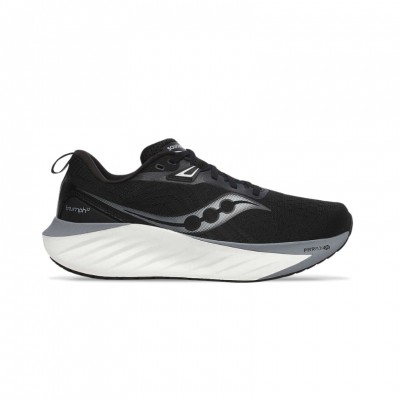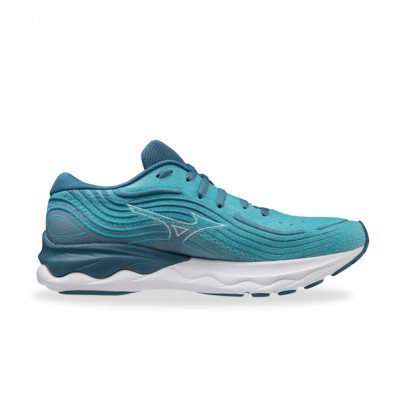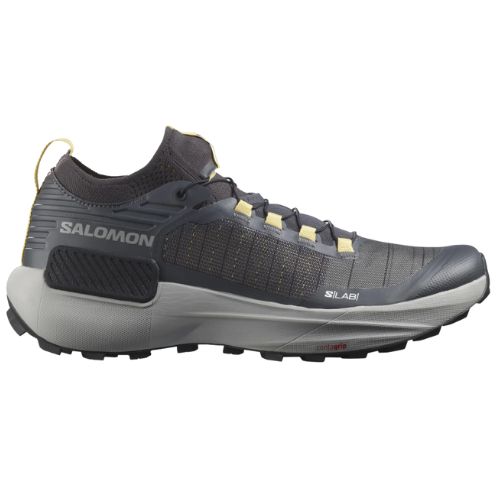In this article we are going to talk about fractures, but not common fractures, but stress fractures. As a small advance we will see that in many occasions it is not possible to diagnose neither promptly nor with certainty, since the diagnosis and the symptomatology are very similar to other types of injuries.
Therefore, throughout the article we will see:
- What is a stress fracture?
- The different classifications of such fractures.
- Bones where such fracture is more probable, due to their peculiarities.
- The symptoms and causes (why it occurs) of stress fractures.
- Prevention and treatment of the injury.
Once we get into the subject, we are going to develop point by point, we hope you like it and that you go deeper into the subject, being able to improve your knowledge in this way.
We begin...

What is a stress fracture?
Stress fractures consist of a crack, which should be considered a fracture, in any of the bones of the body. As it is a "simple" crack, its prognosis is often difficult, that is why they are often mistaken and professionals need the application of various techniques to make a proper diagnosis.
These fractures are usually called fatigue or overload fractures, due to the fact that one of the main causes, as we will see later, is the continuous repetition of a certain impact.

Classification of stress fractures
Stress fractures have great differences between them when it comes to their prognosis, in addition to each fracture we must add the individualization of each organism, for example, healing time, different applicable methods,...
For all these reasons, there are different classifications, but the one most used by different authors is the distinction between low-risk fractures and high-risk fractures. For example, the authors Torrengo, F; Paús, V and Cédola, J. (March, 2010), speak of this classification: low-risk fractures are those that have a satisfactory prediction simply by cancelling the physical activity carried out and, on the other hand, in high-risk fractures the healing time is longer, increasing when it takes longer to predict the injury.
In addition, within each group, the bone structures that are in each group are classified:
Low risk fractures: upper extremity (clavicle, scapula, humerus, olecranon, ulna, radius, scaphoid and metacarpals), ribs, lumbar vertebrae, pelvis (sacrum and pubic branches); femur (diaphysis); tibia (diaphysis); fibula, calcaneus and metatarsals (diaphysis).
High risk fractures: Femur (neck), patella, tibia (anterior cortex), tibia (tibial malleolus), talus, tarsal scaphoid, fifth metatarsal (metaphysis), second metatarsal (base) and sesamoid.

Bones at greater risk
Different articles show us which bones are the most prone to stress fracture (later we will see the causes why they occur), these bones are:
- The fifth metatarsal of the foot; this fracture occurs in athletes who repeatedly occur throughout such physical activity, for example, jumpers, runners....
- The internal malleolus of the ankle and metatarsals of the foot, as well as the fifth metatarsal, occur in a higher percentage in long distance runners and jumpers due to the impact in their corresponding sports disciplines.
- Also the tibia is another bone where these injuries occur with assiduity, in many occasions if it is detected in time, with rest its cure is assured, otherwise in very possible its total fracture with the damage of the same one.
- Other very common areas are the pelvis, the neck of the femur, the epiphysis of the fibula and the sesamoids of the foot.

Symptoms and causes of stress fractures
As we said in previous articles, we must know how to differentiate between the symptoms and the causes.
The causes are the reason why any type of injury occurs or the origin of the same one. On the other hand, symptoms are the indication of what is happening or what is going to happen in the future sooner rather than later if we do not pay attention to the signals that our body is sending us.
Therefore, we will differentiate the causes from the symptoms.
The symptoms are very similar to other injuries, as we have already mentioned in the introduction, hence the difficulty in making a proper prognosis. In a stress fracture the symptoms are mainly two:
- Pain in the area obviously due to the fracture.
- Possible inflammation in the same area.
On the other hand, the causes are more extensive since each stress fracture can occur for different reasons, but we are going to propose several possibilities at a general level in which very possibly have been able to produce this injury. They can also be differentiated intoextrinsic factors (external to the athlete) and intrinsic factors (due to the athlete). These are:
Intrinsic factors
- Alterations in posture, due to poor technique.
- Muscular decompensations, already commented in previous articles its importance.
- When the athlete has a lower bone density (called osteoporosis), which is more common in veteran athletes.
Extrinsic factors
- Poor physical planning, therefore, the importance of having a professional in charge of you to obtain the quality of your training by controlling loads and rests.
- Due to continuous repetition on the same impact zone during training.
- Changes in the surface of the sport discipline performed.
- Carrying out an unregulated and bad nutrition.

Prevention and treatment
As we have already said, both concepts are closely related, that is why we are going to include them in the same section.
The prevention for a stress fracture consists of carrying out different exercises and advices that we are going to develop next in order to make the most suitable possible set-up of each sportsman. For example:
- Good footwear, appropriate for our footprint, therefore, it is highly recommended that we carry out a study of our footprint so that the choice of our shoe is correct and, in this way and with the recommendations of an expert, we do not fail in our ideal shoe. In addition, the biomechanical analysis will prevent a higher percentage of stress fractures, mainly the fracture of the fifth metatarsal of the foot.
- Avoid overtraining (poor training planning) which era a possible cause of such fracture.
- Avoid abrupt changes of surfaces and above all be careful when training on hard terrain such as asphalt.
- Improve your technique if necessary to avoid unnecessary overloads that over time can lead to more harmful injuries such as stress fractures.
- It is also essential to strengthen your muscles as in other injuries.
- In addition to having a proper diet so that the calcium values are adequate to avoid suffering certain unfortunate mishaps.
On the other hand, the treatment that is performed in each stress fracture should be individualized for each injury as we propose from Rend and Prev, but in order not to make the article too long we will propose more general sections that are the most appropriate, but knowing that the ideal is to put you in the hands of professions, both your physiotherapist and osteopath to improve properly your injury.
As for the treatments proposed for the healing of a stress fracture are:
- Mainly rest of the area where the injury has occurred for full mobilization, but some experts say that in certain bones in highly recommended surgical treatment because its evolution is often the highest.
- The addition of analgesics for pain and the application of ice to reduce the swelling is recommended.
- Muscular strengthening of the muscles that are related to the affected bone.
- If the fracture has occurred in a joint, gaining mobility is also essential.
- We can include aspects very similar to those we use in prevention, such as improving the technique (in running pool, so that there is no impact), or proprioception work,...
- In some cases it is necessary to apply a plaster cast to the area so that rest is necessary.
- In certain cases and depending on the area where the injury occurs, surgery will be applied. In other cases, when conservative treatment does not reach total healing.
- In addition and to be finalizing it is a priority the application of different physiotherapy treatments; your physiotherapist will know which is the most appropriate for each phase of your recovery.

Conclusions
Finally, the sports world must have the right techniques for the diagnosis to be accurate and as quickly as possible, and is that stress fractures often lead to deception on certain occasions and this is what we as professionals can not afford, since time sometimes plays against us.
And finally, from Rend and Prev we want to encourage all athletes to have their professional team so that both training planning, nutrition and recovery and injury prevention is constant and quality.
Photos: ASICS Running.
Read more news about: Sports Injuries



















